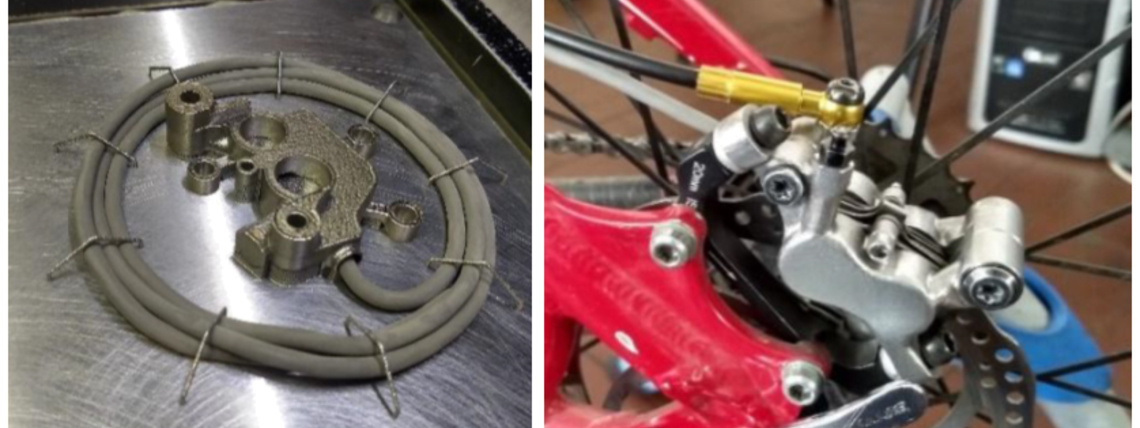The articles of the current edition are available on the new site.

After several months of research and development, the innovative technology to produce metal components containing sensors and electronic circuits will be presented at the AMMM – Additive Manufacturing Meets Medicine 2020 conference (9-11 September 2020).
The technology, certainly innovative in the international arena, was developed by the Department of Mechanical and Aerospace Engineering of the Politecnico di Torino under the guidance of Professor Giorgio De Pasquale. Some steps of the development were shared with leading industrial partners in the field, to provide the reliability necessary for market production.
This printing technology overcomes the current methods used to install electronic systems on mechanical parts, allowing instead to incorporate sensors and circuits within the volume of the metal component during its fabrication. This achievement has been obtained by the modification of traditional additive manufacturing processes. At the same time, their advantages in production are preserved.
The tests of the first prototypes confirmed the expectations, in particular for mechanics, bioengineering, aerospace and energy fields, which are already accompanied by feasibility studies about additional industrial applications initially not considered.
In this context, the new technology allows to embed electronic elements into the heart of the melted metal and, at the same time, to preserve the integrity of the delicate circuits and sensors. Therefore, the component is literally created starting from its virtual design, where sensors, transmitters and electronic boards are also included in this "creation". The positioning of electronics and wiring is completely free and measuring points otherwise inaccessible can be reached, by fully exploiting the space three-dimensionality. Of course, the protection against external contamination and perturbations is also provided.
“This innovative technology is inspired by the growing needs to connect each other the complex systems around us, from vehicles to surgical instruments, from energy production systems to aircrafts – explains Professor Giorgio De Pasquale. The Internet of Things (IoT) discipline requires new solutions, both at the design and process levels, to produce components able to measure their state of health, the parameters of the environment, their operative conditions and, then, to communicate and share these data with the outside world. With this technology, to some extent, we aim to expand the potential and the scale of the traditional concept of structural monitoring”.
In the figure, one of the prototypes that have passed structural and functional testing: it is a brake caliper made with a "native" thermal sensor (that is born together with the component), located in an unconventional position that allows reading the pad temperature with high accuracy (1 mm distance from the piston). The figure shows the component still welded to the manufacturing plate of the additive machine, with the electrical wiring of the thermal probe and then installed on the test bench for testing